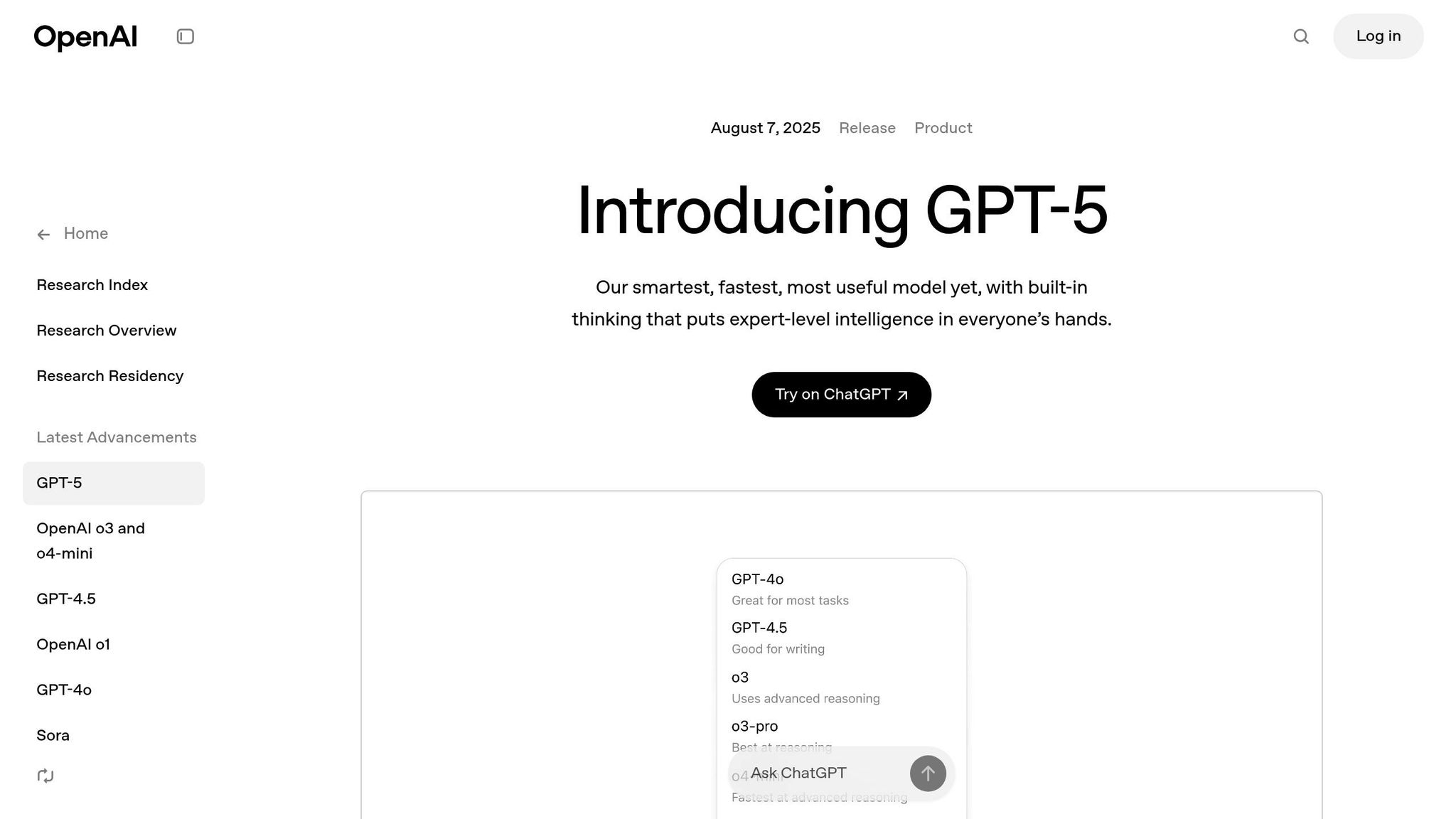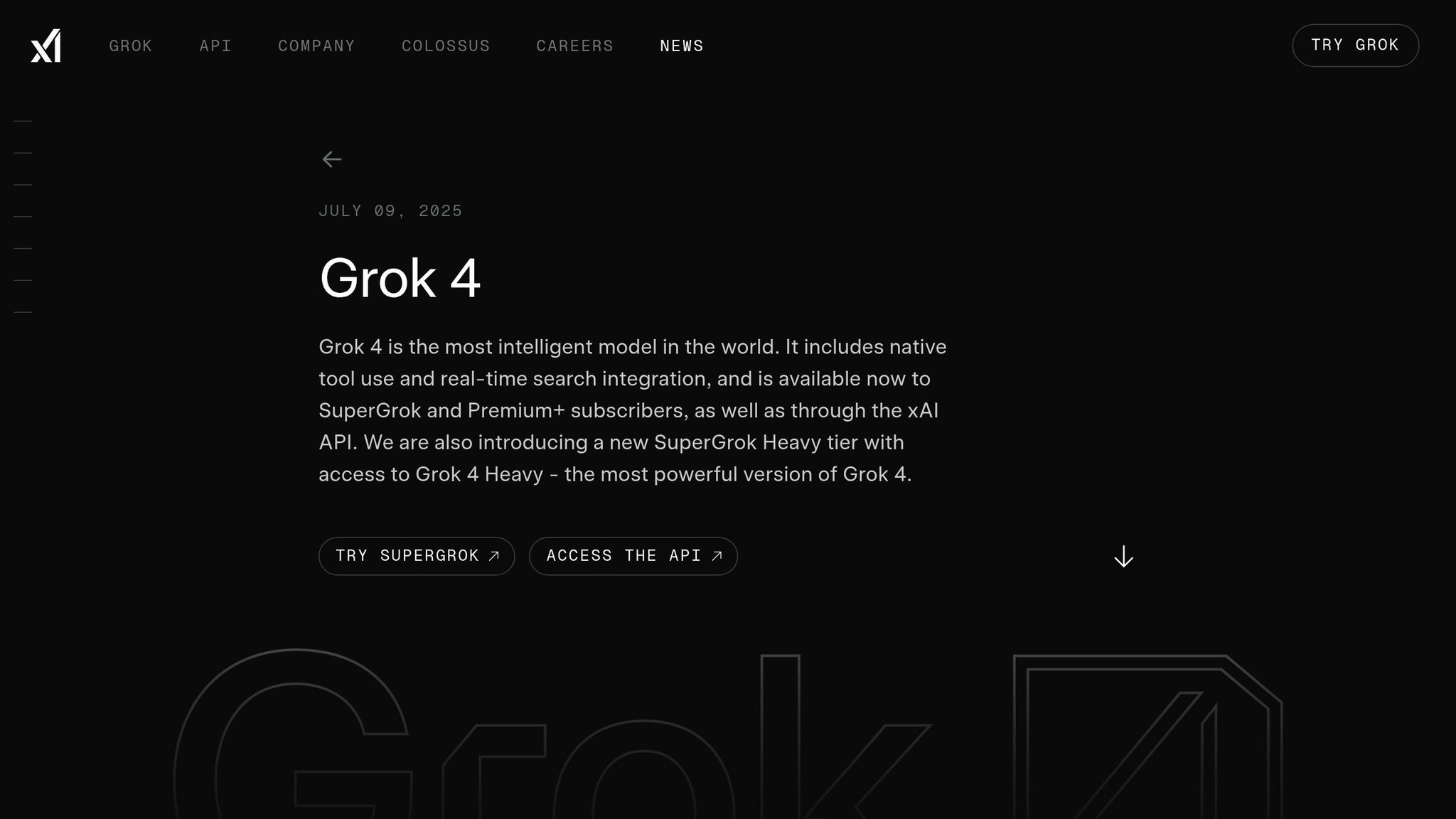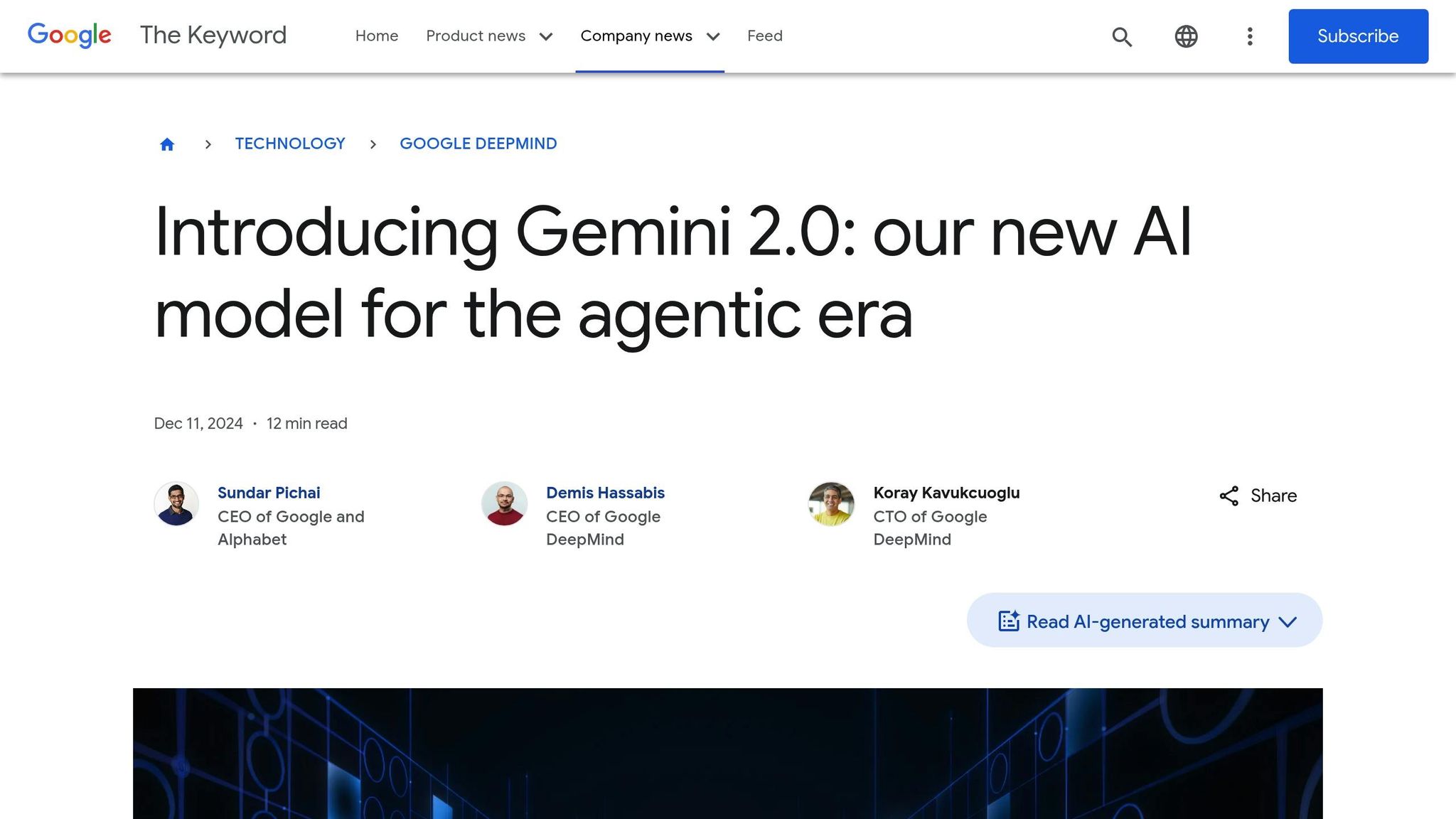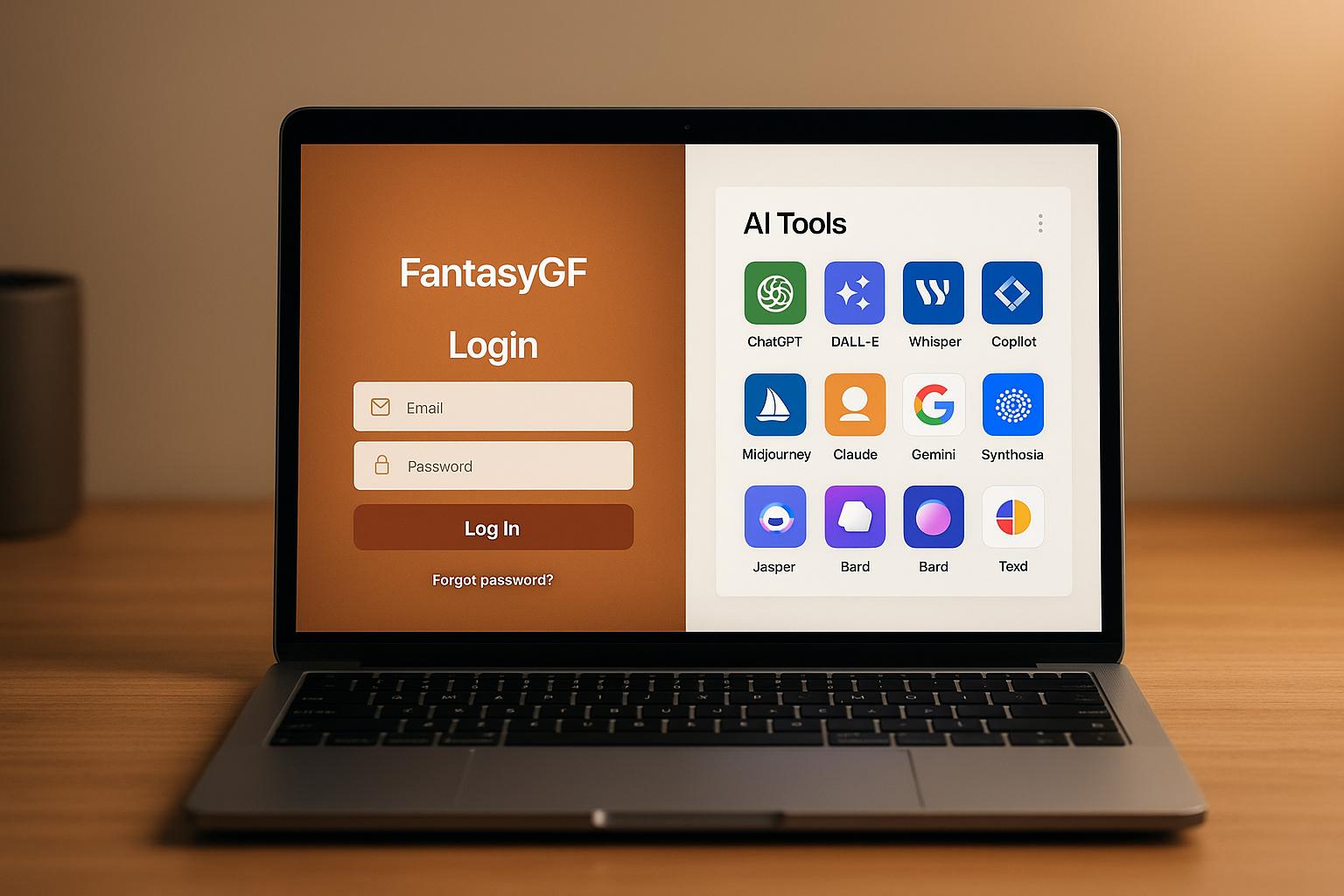Looking for the best AI model in August 2025? Here’s a quick breakdown:
- GPT-5: OpenAI’s latest language model excels in natural language processing, long conversations, and creative tasks. Perfect for content creation, coding, and technical writing. However, it lacks real-time data access and requires significant computational resources.
- Grok 4: X’s real-time processing AI is ideal for staying updated on breaking news, market trends, and social media sentiment. It’s fast, cost-effective, and great for journalists, traders, and marketers, though it’s less effective for complex or creative tasks.
- Gemini 2.0: Google’s multimodal AI integrates text, images, audio, and video seamlessly. It’s a powerhouse for handling diverse datasets, making it a strong choice for media, research, and enterprise-level tasks. Its complexity and resource demands may require significant investment.
Quick Comparison:
| AI Model | Key Strengths | Limitations |
|---|---|---|
| GPT-5 | Language tasks, reasoning, content creation | No real-time data, high costs |
| Grok 4 | Real-time updates, sentiment analysis | Limited depth, less polished for creativity |
| Gemini 2.0 | Multimodal tasks, long-context processing | Resource-heavy, steep learning curve |
Each model serves different needs. GPT-5 is best for language-heavy tasks, Grok 4 for real-time insights, and Gemini 2.0 for multimedia and complex projects. Choose based on your specific goals.
The Best AI Models Ranked By REAL Performance Data 2025
1. GPT-5

OpenAI's GPT-5 represents the latest leap in language model technology, designed to improve how we interact with AI across tasks like conversational support, coding assistance, and technical writing. Let’s explore its performance, features, and potential applications.
Performance
GPT-5 shines in managing extended conversations, keeping track of context even during lengthy interactions. It’s built to handle complex, multi-step queries with ease while delivering faster responses - making it ideal for dynamic, interactive environments.
Features
One of GPT-5's standout qualities is its ability to adapt to different user needs. It offers improved context retention and greater flexibility, allowing users to tailor the model to their specific requirements. These advancements make it a reliable choice for organizations looking for AI that can adjust to varied scenarios.
Use Cases
The versatility of GPT-5 makes it a valuable tool for many professionals. Content creators can use it for brainstorming and writing, developers can rely on it for coding support, and educators can leverage it for creating learning materials efficiently.
Industry Applications
GPT-5 has practical uses across multiple industries. In healthcare, it helps with documentation; in finance, it simplifies reporting; and in legal fields, it assists with drafting documents. Its ability to adapt to specialized tasks makes it a helpful resource in diverse sectors.
Cost and Accessibility
To accommodate projects of all sizes, GPT-5 offers flexible, usage-based pricing along with API integration, ensuring that businesses can scale its implementation according to their needs.
2. Grok 4

Grok 4 is a cutting-edge AI model designed to excel in real-time information processing and analytics. With its focus on staying up-to-date with current events and interpreting dynamic data, it brings a fresh approach to solving time-sensitive challenges in various industries.
Performance
Grok 4 shines when it comes to real-time data processing, offering quick and accurate responses to queries about breaking news, market changes, and trending topics. Its ability to access live data streams ensures it can provide contextually relevant answers that reflect the latest developments. This makes it particularly valuable for scenarios where up-to-the-minute information is essential, such as financial markets or news reporting. By combining speed with precision, Grok 4 delivers a powerful tool for decision-making in fast-paced environments.
Features
What sets Grok 4 apart is its real-time web access and continuous news monitoring. Unlike AI models restricted to pre-existing training data, Grok 4 keeps its knowledge base updated with the latest events and trends, ensuring it remains relevant and reliable.
The model also boasts advanced sentiment analysis and multi-modal processing. This means it can evaluate public opinion, market sentiment, and social trends while analyzing text, images, and data visualizations simultaneously. By integrating these capabilities, Grok 4 offers a more comprehensive understanding of complex scenarios, making it adaptable to a wide range of applications.
Use Cases
Grok 4's advanced features translate into practical benefits across different fields:
- Journalists and media professionals use it for breaking news analysis and fact-checking. Its ability to cross-reference multiple sources and provide detailed context makes it an invaluable tool for covering developing stories.
- Financial analysts and traders rely on its real-time market data processing to spot trends, assess market sentiment, and make informed investment decisions. Its knack for analyzing vast amounts of financial information while staying up-to-date with current events gives it a competitive edge.
- Social media managers and digital marketers turn to Grok 4 for monitoring brand mentions, tracking campaign performance, and responding to trending topics. Its sentiment analysis tools help teams gauge public perception and fine-tune their strategies on the fly.
Industry Applications
Grok 4 finds its place in several industries, offering tailored solutions:
- In financial services, it supports risk assessment by analyzing market conditions, regulatory updates, and economic trends in real time. Investment firms use it to streamline research and speed up decision-making.
- Public relations agencies benefit from its ability to monitor sentiment across platforms, enabling quick responses to potential crises and helping manage reputations effectively.
- For e-commerce businesses, Grok 4 tracks competitor pricing, monitors market trends, and evaluates customer sentiment about products. This helps businesses adapt to rapidly changing markets and stay ahead of the competition.
Cost and Accessibility
Grok 4 operates on a tiered subscription model, allowing users to scale its capabilities based on their needs. Pricing varies depending on the frequency of real-time data access and the volume of queries, making it suitable for both individual users and large enterprises.
Additionally, Grok 4 offers API integration, enabling businesses to incorporate its real-time analytics into their existing workflows and applications. This flexibility ensures organizations can tailor the model to fit their specific requirements and budget, making it a versatile choice for a wide range of users.
sbb-itb-212c9ea
3. Gemini 2.0

Gemini 2.0 represents Google's latest step forward in multimodal AI, designed to process text, images, audio, and video within a single system. This advanced model can understand and generate content across multiple formats at the same time, making it a powerful tool for both creative and analytical tasks.
Performance
Gemini 2.0 excels at handling tasks that involve multiple types of media, seamlessly processing diverse datasets. Its enhanced reasoning capabilities allow it to draw meaningful connections between different formats. The model also demonstrates advanced language understanding across numerous languages and provides support for coding-related tasks, making it a versatile asset for professionals in various fields.
Features
One of Gemini 2.0's standout features is its ability to integrate multiple formats into a single workflow. Users can upload documents, images, audio, and video, and the model will analyze them while maintaining context throughout. Its advanced reasoning capabilities make it effective for solving complex, multi-step problems, whether in mathematics, science, or strategic planning. Additionally, the model supports long-context processing, making it ideal for working with lengthy documents or intricate project details.
Use Cases
Gemini 2.0's integrated features make it a go-to solution for a wide range of applications:
- Content creators and marketers can craft campaigns that combine written content, visuals, and video scripts, all while maintaining a unified message.
- Researchers and academics can analyze documents and synthesize information from multiple sources, streamlining tasks like literature reviews.
- Software developers can rely on the model for code reviews, generating documentation, and other programming-related tasks.
Industry Applications
Following the advancements seen in models like GPT-5 and Grok 4, Gemini 2.0 takes multimodal integration to new heights.
- Healthcare: Medical professionals can use the model to analyze patient records, medical images, and research papers, providing support for diagnostics and treatment planning under expert supervision.
- Education: Schools and universities can create personalized learning materials that combine text, visuals, and interactive elements, catering to different learning preferences.
- Legal: Legal teams can streamline their processes by using Gemini 2.0 to review contracts, analyze documents, and prepare detailed legal briefs.
Cost and Accessibility
Gemini 2.0 adopts a flexible pricing structure based on usage, with tiers tailored to the specific requirements of different tasks. For organizations with high-volume needs or specialized deployment scenarios, enterprise licensing options are available. These packages often include dedicated support, custom integration services, and advanced security measures. Additionally, the model offers API access with detailed documentation and developer tools, ensuring it’s both accessible and scalable for businesses of all sizes.
Advantages and Disadvantages
Here’s a concise breakdown of the advantages and disadvantages of each AI model, summarizing their key strengths and limitations. This comparison can help you decide which model aligns best with your specific needs.
| AI Model | Advantages | Disadvantages |
|---|---|---|
| GPT-5 | - Exceptional at natural language processing, enabling human-like conversations - Great for creative writing and content generation - Strong reasoning skills for tackling complex problems - Extensive training data covering a wide range of topics - Backed by a well-established ecosystem with robust API support |
- High computational requirements lead to increased operating costs - Limited access to real-time information without additional tools - Can produce plausible but inaccurate information - Slower processing speeds for complex queries |
| Grok 4 | - Real-time data access, perfect for up-to-date information - Quick response times for time-sensitive queries - Strong integration with social media and news platforms - Competitive pricing for high-volume users - Handles trending topics and current events efficiently |
- Less polished conversational abilities compared to other models - Limited capabilities for creative writing - Smaller training dataset may reduce depth of knowledge - Newer ecosystem with fewer third-party integrations |
| Gemini 2.0 | - Advanced multimodal processing for text, images, audio, and video - Smooth integration across various content formats - Strong analytical skills for handling complex datasets - Excels at processing long-context information in detailed documents - Flexible pricing tied to actual usage patterns |
- Steeper learning curve due to its complexity - High resource demands for multimodal tasks - Inconsistencies may arise when switching between content formats - Enterprise-level features require significant investment |
GPT-5 stands out for its in-depth conversational abilities and creative outputs but comes with higher processing power demands and costs. Grok 4 shines in speed and real-time accuracy, making it a go-to for current information, though it’s less equipped for creative or in-depth tasks. Gemini 2.0 is ideal for multimodal tasks and long-context processing, but its complexity and resource requirements could be challenging for some users.
When it comes to pricing, Gemini 2.0 offers flexibility for variable workloads, while GPT-5 ensures predictable costs for high-volume use. On the other hand, Grok 4 provides budget-friendly options for real-time processing. Integration is another key factor: GPT-5 benefits from a mature ecosystem, Gemini 2.0 demands careful planning for multimodal capabilities, and Grok 4 might require additional development work due to its newer architecture.
Final Recommendations
Selecting the right AI model boils down to understanding your specific needs and priorities. Here's a breakdown of where each model excels:
- GPT-5: This model shines in areas like content creation, customer support, and tackling complex problems. Industries such as marketing, education, and consulting benefit from its conversational and imaginative abilities. However, keep in mind its higher computational demands, which might require more robust resources.
- Grok 4: If real-time data processing is your priority, Grok 4 is a strong contender. It's particularly useful for news organizations, financial services, and social media management, where speed and up-to-date information are critical. Its lower cost makes it especially appealing to startups and smaller businesses that need quick responses without focusing on advanced creative tasks.
- Gemini 2.0: For enterprises handling diverse and complex content, Gemini 2.0 is a solid choice. Media companies, research institutions, and corporations managing large-scale data analysis will appreciate its multimodal processing capabilities. While it requires a higher investment, its flexible, usage-based pricing can make it a worthwhile option for those regularly working with mixed content formats.
To simplify the decision-making process, centralized tools like AI Apps can be incredibly helpful. AI Apps offers a curated directory of over 1,000 AI tools, complete with advanced filtering options. You can search by category, pricing model, or specific features, making it easier to find a model that aligns with your goals. Whether you're exploring free tools to test functionalities or premium solutions for enterprise-level needs, AI Apps provides a clear, comprehensive comparison to guide your choice.
Ultimately, the best approach is to align your primary use case with the strengths of each model, rather than searching for a one-size-fits-all solution.
FAQs
How do GPT-5, Grok 4, and Gemini 2.0 compare in terms of capabilities and ideal use cases?
GPT-5 stands out for its ability to handle reasoning, coding, and creative problem-solving with ease, making it a top choice for tackling complex tasks across a wide range of industries. Its well-rounded performance makes it suitable for both general use and more advanced, specialized applications.
Grok 4, though a bit older, remains a solid option for everyday tasks. Its smaller context window limits its ability to process very long documents, but for standard tasks that don’t require extensive input, it performs reliably.
Gemini 2.0 excels at analyzing large-scale research or lengthy documents, thanks to its expanded context window. While it may not be as sharp as GPT-5 in reasoning, it’s a strong option when dealing with tasks that involve heavy text processing or large volumes of data.
Each model brings something different to the table: GPT-5 is the all-rounder, Grok 4 is dependable for day-to-day needs, and Gemini 2.0 is a powerhouse for handling extensive content.
How do the hardware and energy demands of AI models impact their fit for different businesses?
The hardware and energy demands of advanced AI models like GPT-5, Grok 4, and Gemini 2.0 play a big role in determining how well they fit different business needs. These models typically require powerful servers, extensive storage, and high energy usage, making them a better match for large enterprises with the resources to support such infrastructure.
For smaller businesses or startups, however, these requirements can be a hurdle due to the increased operational costs. This often leads them to explore more efficient or scaled-down AI solutions that better fit their budget and existing infrastructure. Ultimately, selecting the right model comes down to finding the right balance between performance expectations and available resources.
How do I choose the right AI model for real-time data processing versus multimodal capabilities?
When choosing an AI model, it's essential to align it with your primary objectives. If your focus is on real-time data processing, you'll want a model that excels at delivering instant responses with minimal lag. This is especially important for scenarios like live monitoring, financial trading, or operating autonomous systems. On the other hand, if your work involves handling and combining different data types - such as text, images, and audio - then multimodal capabilities are a must for tasks like advanced analytics, content creation, or context-aware decision-making.
Ultimately, it comes down to finding the right balance between speed and data complexity. For situations where quick insights are non-negotiable, prioritize models fine-tuned for real-time efficiency. If your focus is on deeper, more thorough analysis across varied data formats, go for models built to manage and process diverse inputs effectively.



